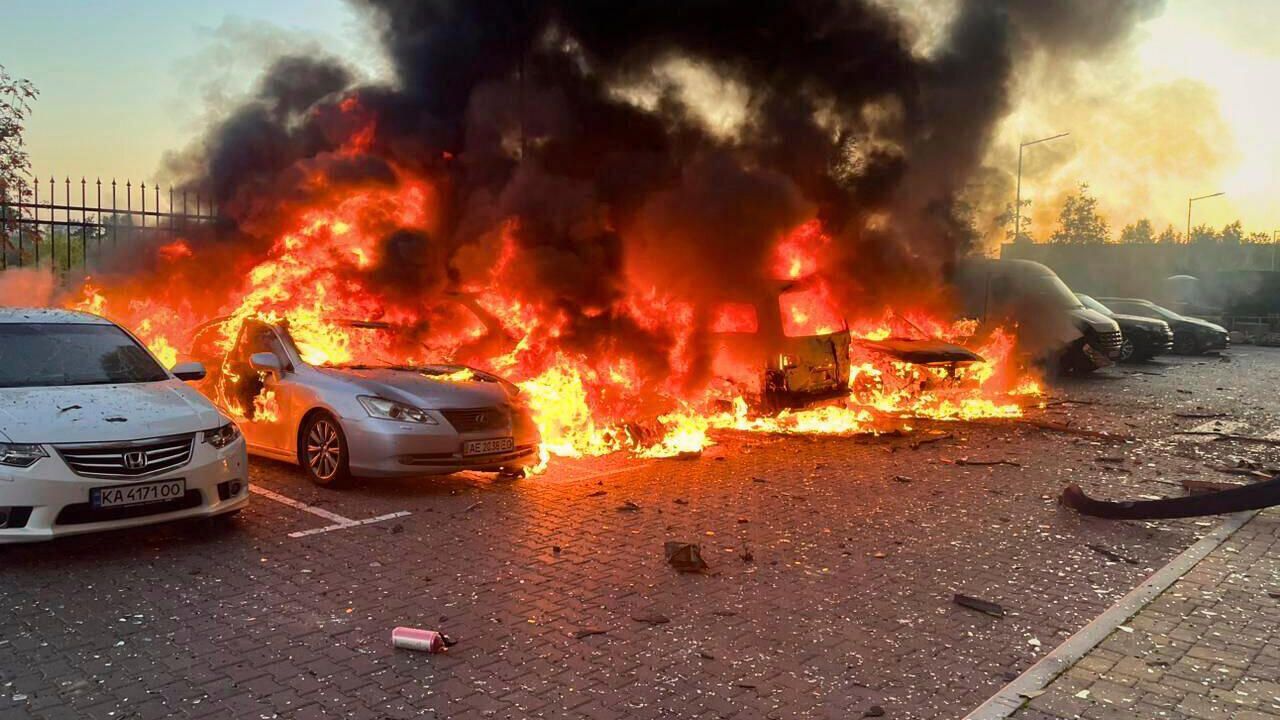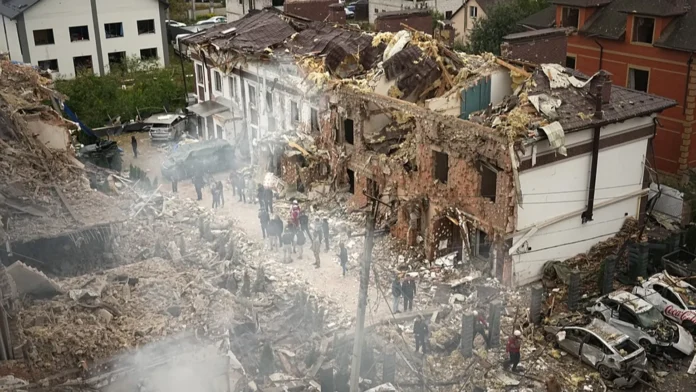Deadly Barrage Across Ukraine
Russia launched one of its heaviest coordinated attacks on Ukraine overnight, striking multiple cities with nearly 500 drones and more than 40 missiles over a 12-hour period. Ukrainian officials confirmed that at least four civilians were killed, including a 12-year-old girl in Kyiv, while dozens more were injured.
According to President Volodymyr Zelensky, the capital city of Kyiv endured extensive damage in at least 15 different locations, with residential buildings, medical facilities, and schools among the structures hit. Emergency services reported that 27 people were injured in the capital alone. In the southeastern city of Zaporizhzhia, 21 more were wounded after missiles slammed into apartment complexes and other infrastructure.
NATO on Alert as Poland Scrambles Fighter Jets

The intensity of the strikes triggered a swift regional response. Poland, a NATO member bordering Ukraine, scrambled fighter jets and temporarily closed its airspace near the southeastern cities of Lublin and Rzeszów. Officials described the move as a precautionary measure to safeguard civilians and ensure the security of air operations.
NATO confirmed that Dutch F-35 stealth fighters and a German Patriot missile defense system were also placed on heightened alert. The alliance has recently strengthened its presence in the Baltic Sea following reported drone incursions over Denmark and Norway. Danish officials characterized the incidents as “hybrid attacks” carried out by what they described as a “professional actor.”
Scale and Scope of the Overnight Strikes
Independent military analysts have described the barrage as one of the largest against Ukraine’s capital since Russia launched its full-scale invasion in February 2022. In Kyiv, several residential blocks were destroyed, including a five-story apartment building that caught fire after a direct hit. A kindergarten and warehouses were also among the damaged sites.
The attack included the use of advanced Kinzhal cruise missiles and stretched across more than half a day. Sirens wailed throughout the night, forcing many Kyiv residents to seek safety inside underground metro stations. Explosions echoed well into the morning as Ukrainian air defenses worked to intercept incoming missiles and drones.
Zaporizhzhia, another major target, endured at least eight separate strikes between 1:00 a.m. and 5:30 a.m., according to regional Governor Ivan Fedorov. Other cities, including Khmelnytskyi, Sumy, and Odesa, also came under fire, with widespread reports of damage to housing blocks and civilian infrastructure.
Rising Regional Tensions

The assault comes at a time of heightened instability across Eastern Europe. NATO’s increased surveillance and troop movements highlight concerns about the broader security risks of Russia’s continued offensive. Poland, which shares a long border with Ukraine, has repeatedly expressed fears that the conflict could spill over into its territory.
Meanwhile, reports of drone activity over Scandinavian nations have raised alarm among NATO allies. Denmark reported multiple sightings near airports and military facilities, adding to speculation about Moscow’s strategy of using hybrid warfare to destabilize the region.
Diplomatic Stalemate
Efforts to find a political solution to the war remain stalled. Recent statements from former U.S. President Donald Trump following a meeting with President Zelensky at the United Nations General Assembly suggested that Ukraine could reclaim its territories in “their original form.” However, Trump stopped short of pledging additional American military aid, instead insisting that European nations should bear the primary responsibility for supporting Kyiv.
The Ukrainian leadership continues to call for increased international assistance, particularly in air defense systems, to protect civilian populations from Russia’s relentless bombardments. Zelensky reiterated that Moscow’s “insidious tactics” of targeting civilian areas underline the urgent need for stronger global action.
Humanitarian Impact
The latest wave of strikes underscores the devastating humanitarian toll of the ongoing conflict. Families in Kyiv and Zaporizhzhia spent the night in bomb shelters, while emergency crews battled fires and searched for survivors under the rubble of collapsed buildings.
The United Nations has repeatedly condemned attacks on civilian infrastructure, stressing that such strikes may constitute war crimes under international law. With winter approaching, the destruction of residential buildings, power grids, and medical facilities further threatens the lives of millions of Ukrainians already facing displacement, energy shortages, and economic hardship.
Outlook
As Russia intensifies its aerial campaigns and NATO increases its defensive posture, the war shows no signs of de-escalation. Ukraine’s resilience continues to be tested, while European neighbors brace for possible spillover effects.
The overnight assault represents a stark reminder that the conflict, now well into its third year, remains a volatile threat not only to Ukraine but to regional stability across Europe.

